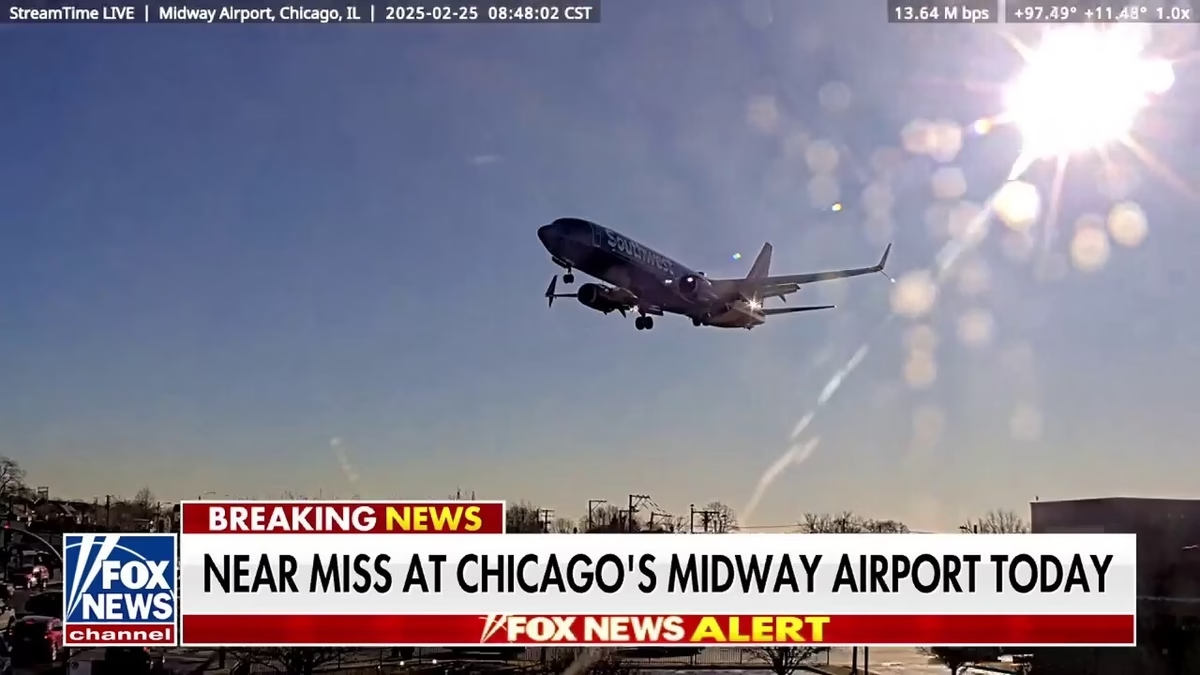Orlando Airport Stops Southwest Airlines Plane Trying to Take Off From Taxiway Instead of Runway
Orlando, FL – April 17, 2025
In a dramatic and potentially catastrophic turn of events at Orlando International Airport (MCO) this morning, a Southwest Airlines Boeing 737 was moments away from attempting takeoff from a taxiway instead of the designated runway when air traffic control intervened, averting what could have been one of the most serious aviation incidents in recent U.S. history.
Flight 2784, scheduled to depart at 7:45 AM en route to Chicago Midway, had pushed back from Gate 105 as normal and taxied out toward the departure area under what appeared to be routine operations. However, according to preliminary information from the Federal Aviation Administration (FAA) and eyewitness reports, the aircraft made an unexpected turn and lined up on Taxiway Bravo instead of Runway 36R.
A Close Call
Airport ground crews first noticed something was amiss when the aircraft halted in an unusual position, perpendicular to Terminal C. The plane’s position was not in line with the expected departure path. Air traffic control (ATC) immediately contacted the flight crew, who at the time were conducting final checks before takeoff.
“Southwest 2784, you are not on the active runway. Abort takeoff. I repeat, abort takeoff immediately,” the controller can be heard saying in recordings later released by the FAA.
The pilots responded promptly, disengaging the throttles just as they were preparing to begin their takeoff roll. Ground surveillance radar confirmed the aircraft was indeed lined up on the parallel taxiway, which runs just 150 feet from the main runway.
Taxiways are not designed to handle high-speed departures, and they lack the same safety infrastructure—including reinforced pavement, runway safety areas, and lighting systems. Had the aircraft accelerated, it would likely have overshot the available length or collided with airport vehicles or other taxiing planes.
Quick-Thinking by Air Traffic Control
ATC specialists at Orlando International Airport are being credited for their vigilance and quick reaction, which prevented the incident from escalating.
“We train for exactly this kind of situation, and today that training paid off,” said Andrew Martin, a senior controller with 14 years of experience. “When I saw where the aircraft was positioned on our system, it was clear something was wrong. We acted within seconds.”
Officials confirmed the incident is under investigation by both the FAA and the National Transportation Safety Board (NTSB), which has already dispatched a team to Orlando.
Flight Crew Removed Pending Investigation
Southwest Airlines confirmed the incident in a statement issued just before noon:
> “Southwest Airlines is aware of an event involving Flight 2784 at Orlando International Airport. The aircraft did not take off and returned to the gate safely. All passengers and crew were unharmed. We are cooperating fully with the FAA and NTSB in their ongoing investigation.”
The flight crew, consisting of a captain with 22 years of service and a first officer in their third year with the airline, have been placed on administrative leave pending the outcome of the investigation.
Passengers were rebooked on alternate flights, and the aircraft was taken out of service for inspection, although officials confirmed there was no physical damage.
Passenger Accounts Vary
Inside the cabin, most passengers had no idea anything unusual had happened—until the plane stopped and the pilot made an announcement.
“He came on the intercom and said there had been a ‘routing issue’ and we were returning to the gate,” said Michelle Daniels, a 34-year-old schoolteacher from Orlando. “Later, I overheard a flight attendant mention something about a wrong runway. That’s when I got nervous.”
Others said they suspected something wasn’t right based on the way the aircraft was turning.
“I’ve flown out of Orlando dozens of times and I always recognize the takeoff pattern. This felt different,” said John Reyes, a retired pilot who was seated in row 2. “When we lined up, I remember thinking: ‘This doesn’t look like the runway.’ Then I saw some ground service vehicles moving nearby and I knew something was off.”
A Pattern of Incidents?
This incident is just the latest in a troubling pattern of near-misses at major U.S. airports. In recent months, the FAA has launched investigations into similar situations involving pilots confusing taxiways with runways—most notably in Austin and New York.
“While aviation in the U.S. remains extraordinarily safe, these kinds of incidents highlight systemic pressures—fatigue, overworked ATC staff, and aging airport infrastructure,” said aviation analyst Julia Spence. “Orlando’s layout is complex, and with early morning sun glare and tight turnaround schedules, mistakes can happen.”
Still, industry professionals stress that such errors are rare and typically caught before they escalate into disaster—just as they were today.
Airport Response and Passenger Reactions
Orlando International Airport released a statement praising the coordination between airport personnel and the FAA.
> “This morning’s event was handled swiftly and safely. We commend the vigilance of our air traffic control team and Southwest Airlines for following all safety protocols.”
Meanwhile, social media lit up with reactions from shaken passengers and concerned citizens. Several photos showing the plane parked on an odd stretch of tarmac quickly went viral, drawing hundreds of comments.
“This could’ve been a tragedy. So grateful for sharp-eyed controllers,” one user wrote on X (formerly Twitter).
“Not exactly how I wanted to start my spring break,” posted another.
Looking Forward
As investigations continue, experts say this incident may reignite discussions about enhanced cockpit procedures, better taxiway signage, and more automated runway verification systems. Some aviation insiders are even calling for mandatory installation of runway incursion alert systems onboard all commercial aircraft.
For now, Flight 2784’s passengers are safe, the aircraft is back at the gate, and a serious incident was narrowly avoided thanks to alert personnel and swift action.
But the question remains: in an era of cutting-edge aviation technology, how close did we come to disaster—and what must change to make sure it doesn’t happen again?
